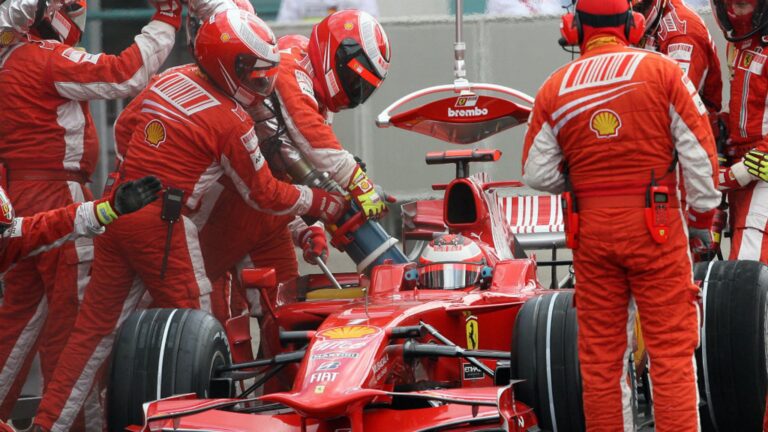Formula 1 has always been a sport driven by innovation and the pursuit of technological excellence. One of the most contentious and divisive aspects of the sport was the practice of refueling during pit stops, which allowed teams to replenish their cars’ fuel supply during races.
This practice was permitted between 1994 and 2009, but was subsequently banned for the 2010 season onwards. In this article, we will explore the reasons behind the ban on refueling in Formula 1.
1. Safety Concerns
One of the primary reasons for the ban on refueling was to address safety concerns. The process of refueling during a race inherently carries a significant risk of fires and accidents, which can result in injuries to drivers, pit crew members, and even spectators. The high-pressure fuel rigs used for refueling can malfunction, leading to fuel spillage and fires. T
he infamous pit lane fire involving Jos Verstappen’s Benetton in the 1994 German Grand Prix and the 2008 Singapore Grand Prix incident where Felipe Massa drove off with the fuel hose still attached to his car are prime examples of how dangerous refueling can be.
2. Cost Reduction
Formula 1 has long been an expensive sport, with teams investing millions of dollars in the development and operation of their cars. By eliminating refueling, the sport aimed to reduce costs for teams.
The specialized refueling equipment and high-pressure fuel rigs were expensive to produce, maintain, and transport to each race. By banning refueling, teams were able to save on these costs and reallocate resources to other areas of car development and operation.
3. Encouraging Overtaking and Race Strategy
Prior to the ban, refueling strategies often played a significant role in determining race outcomes. Drivers and teams would sometimes focus on winning races through pit stop strategy rather than on-track overtaking. This led to less on-track action and overtaking, which in turn reduced the overall excitement and entertainment value of the races for fans.
With the ban on refueling, drivers must now start races with enough fuel to complete the entire race distance. This has placed greater emphasis on tire management and on-track overtaking, as drivers can no longer rely solely on pit stop strategy to gain an advantage.
As a result, the ban has encouraged more exciting and competitive racing, with drivers having to find ways to overtake their rivals on track.
4. Environmental Considerations
As the world becomes more environmentally conscious, Formula 1 has taken steps to become more sustainable and environmentally responsible. Banning refueling is one of the measures the sport has taken to reduce its environmental impact. By eliminating refueling, teams are encouraged to develop more fuel-efficient power units and optimize fuel consumption throughout the race.
This has led to the development of innovative hybrid power unit technologies, which has in turn contributed to advancements in road car technology and fuel efficiency.
The ban on refueling in Formula 1 has had a significant impact on the sport, addressing safety concerns, reducing costs, encouraging overtaking and race strategy, and promoting environmental responsibility.
While the ban has changed the dynamics of the sport, it has also paved the way for new innovations and developments, ultimately contributing to the continued evolution of Formula 1 as a cutting-edge form of motorsport.





